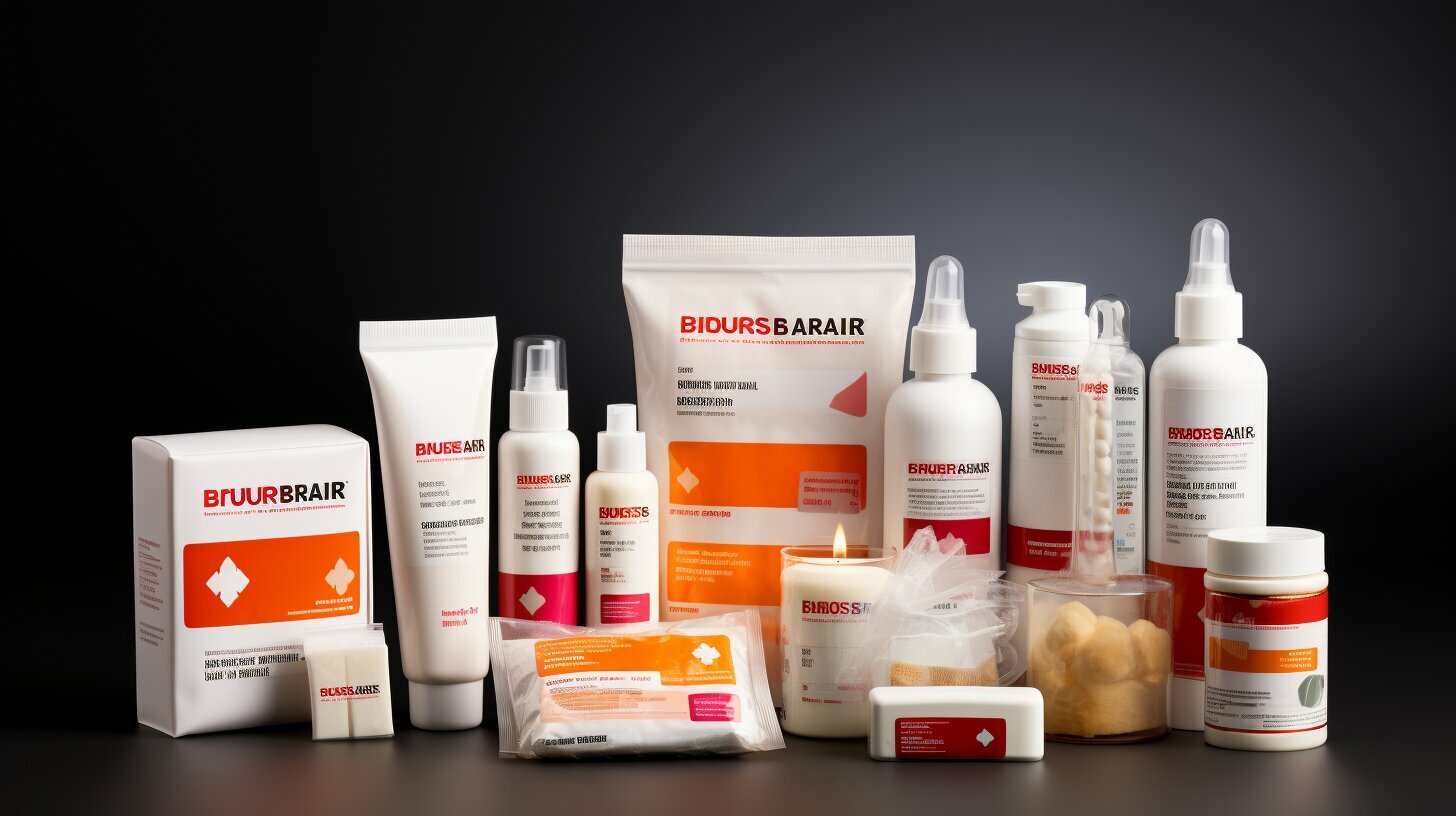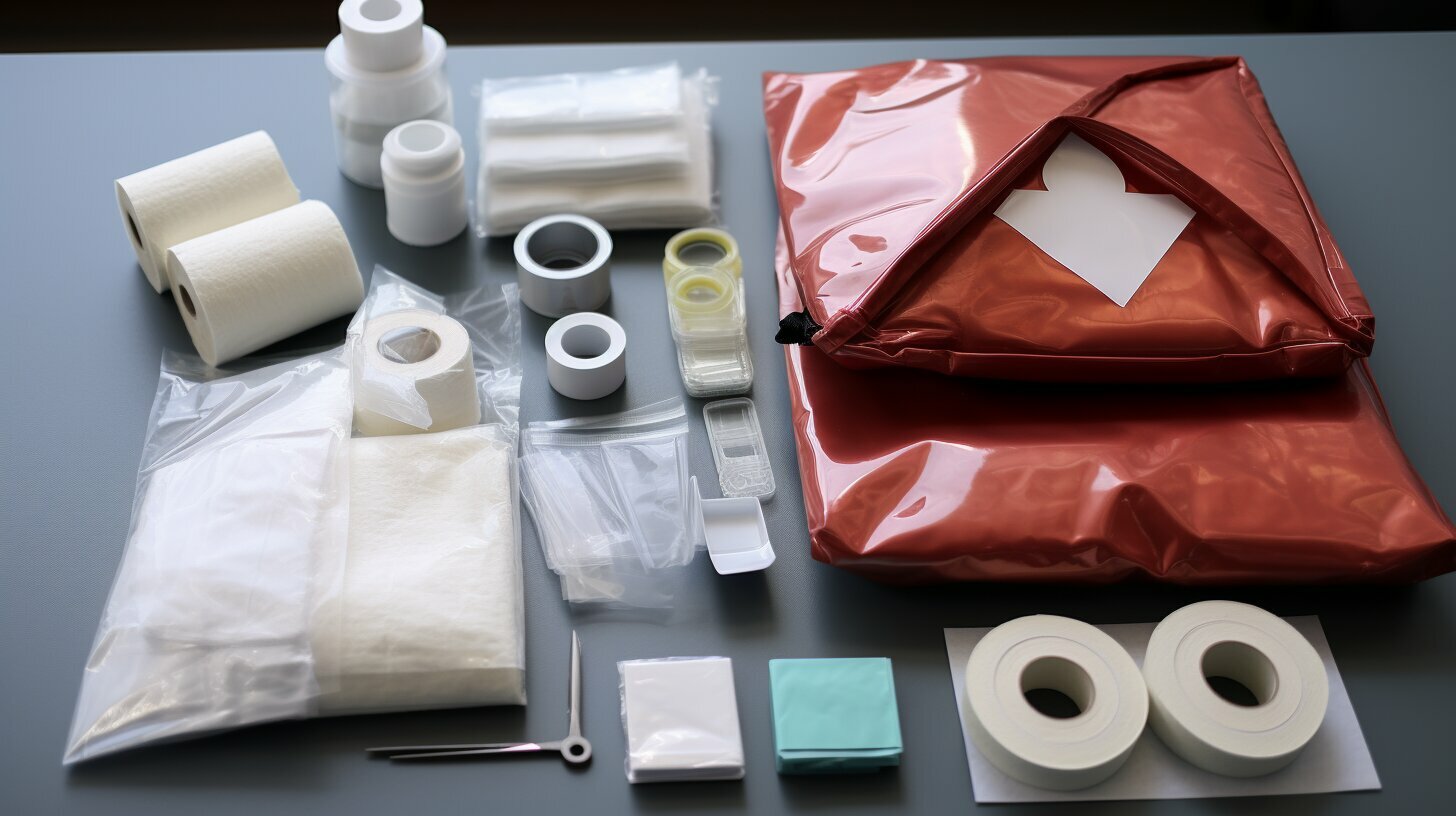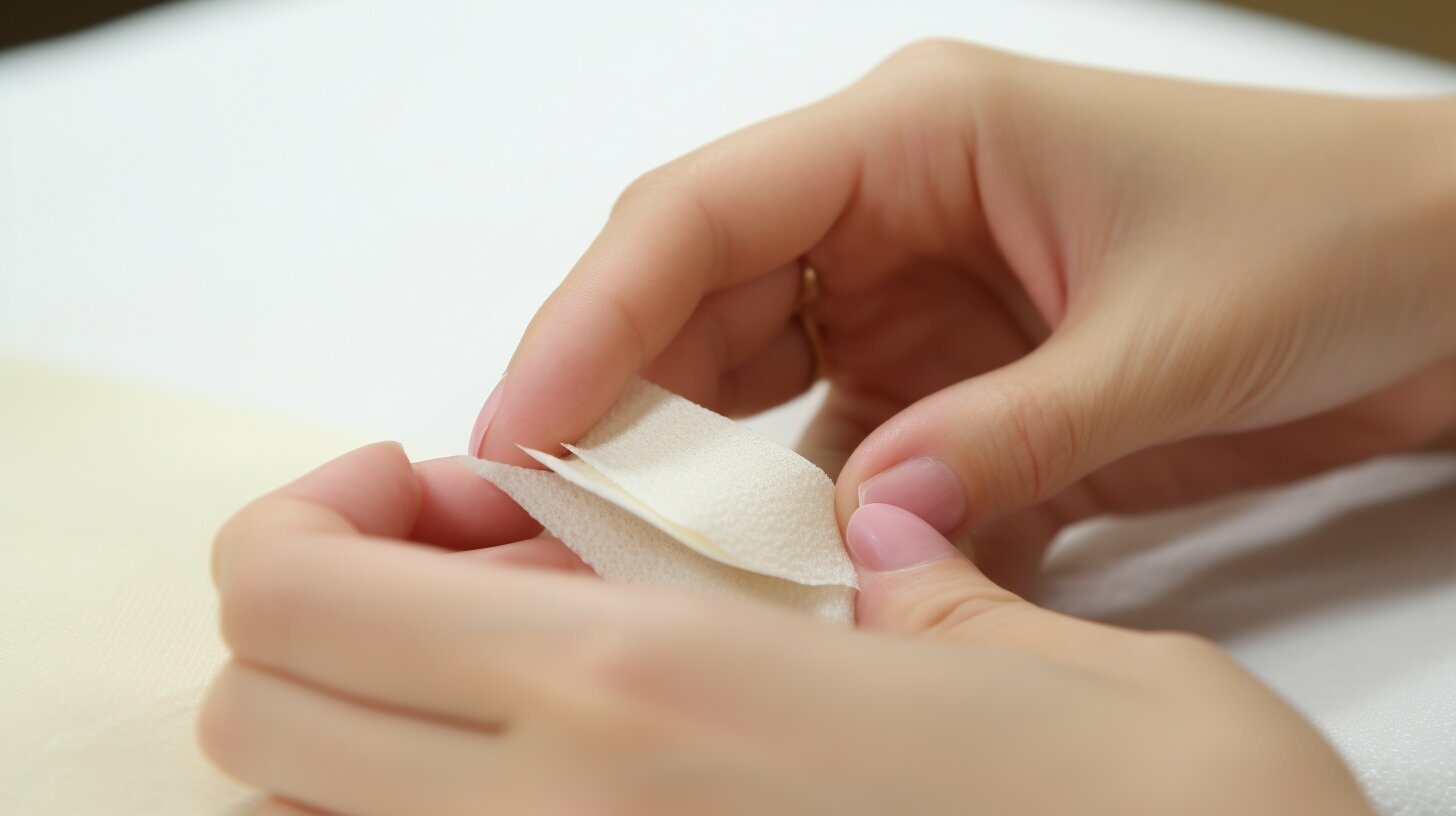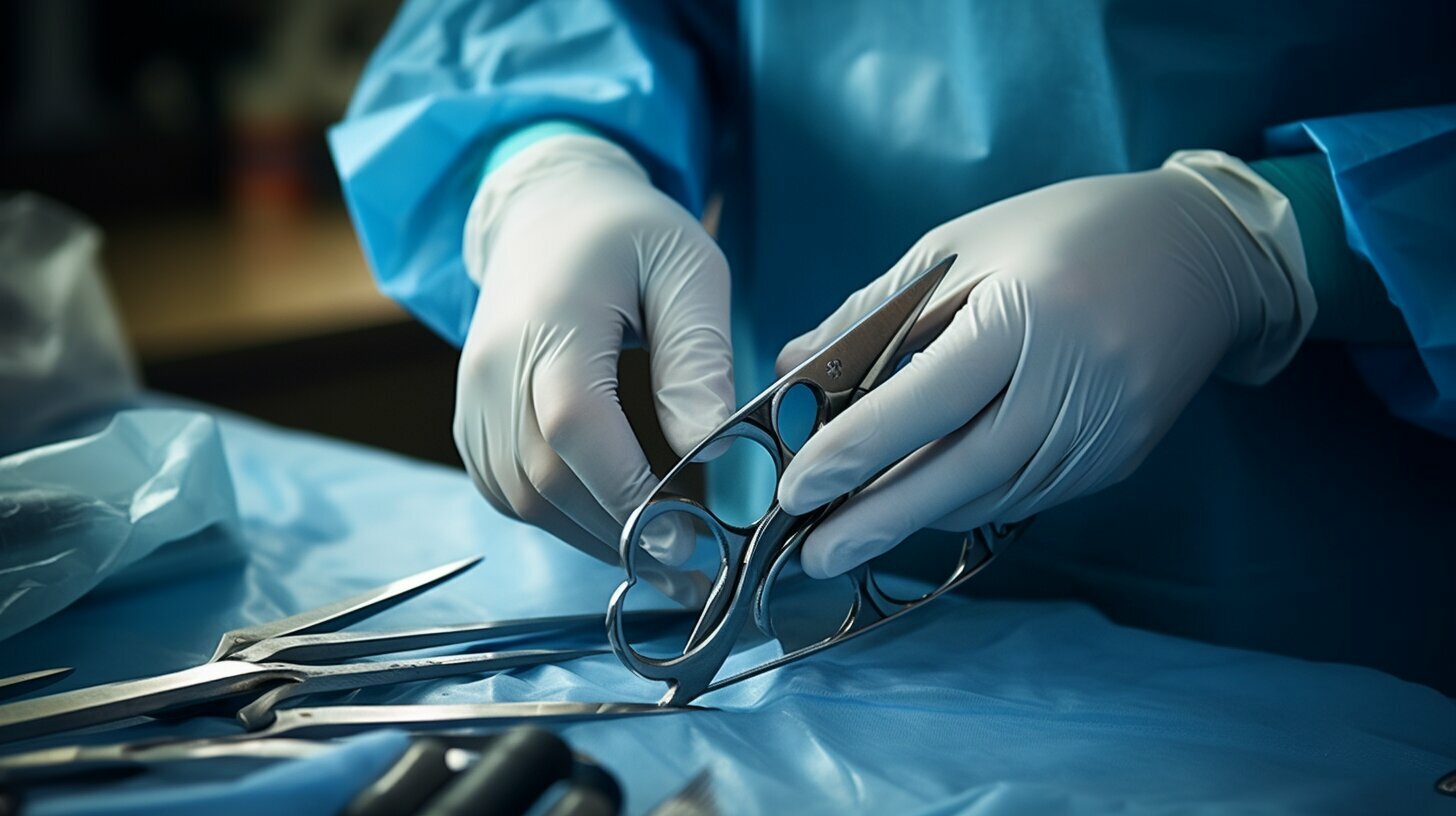Discover the 10 essential items that should be included in every UK home’s first aid kit to ensure the well-being of your family.
Burns, scalds, cuts, grazes, and other injuries can happen at any time, so it’s crucial to have a well-equipped first aid kit in your home. It can provide you with the necessary supplies to handle minor emergencies effectively.
In this article, we will guide you through the must-have items for your first aid kit. From burncare products to washproof sterile plasters, each item plays a vital role in addressing specific injuries.
1. Burncare products: Burns and scalds are common in the home, so it is important to have burncare products that can cool and soothe wounds quickly. Use cold running water to dissipate heat and apply burn dressings or hydrogel.
2. Instant ice pack: Falls and impacts can cause swelling and bruising. Having an instant ice pack on hand can reduce swelling and increase mobility in the injured area.
3. Washproof sterile plasters: Cuts and grazes are common household injuries. Use washproof sterile plasters to cover and protect small wounds.
4. Triangular bandage: This versatile bandage can be used to stop bleeding, cover head wounds, create a sling for an injured arm, and more.
5. Adhesive wound dressing: For deeper cuts, clean the wound with sterile saline wipes and cover with an adhesive wound dressing. For excessive bleeding, use an absorbent dressing secured with a conforming bandage or microporous tape.
6. Gloves: Use disposable gloves from your first aid kit to reduce the risk of infection when treating wounds.
7. Tweezers and tough cut scissors: Tweezers are useful for removing splinters, while tough cut scissors can be used to cut off clothes in emergency situations.
8. Burn gel: Apply burn gel after cooling a burn under cool running water for at least 10 minutes. It is also useful for sunburn.
9. Sterile wipes and saline pods: Use sterile wipes or saline to clean wounds and remove dirt or grit. Saline can also be used to irrigate sand out of eyes.
10. Small crepe bandage: To provide support for an injured limb, have a small crepe bandage on hand.
Remember to attend a practical or online First Aid course to learn how to respond in a medical emergency. It is also important to have emergency service numbers readily available.
Burncare Products
Burns and scalds are common in the home, so it is crucial to have burncare products in your first aid kit to quickly cool and soothe these types of wounds. When a burn occurs, the first step is to dissipate heat by rinsing the affected area with cold running water for at least 10 minutes. This will help prevent further tissue damage and alleviate pain.
One essential item to have in your first aid kit is burn dressings. These specialized dressings are designed to provide a moist environment that promotes healing while protecting the burn from infection. They can be applied directly to the affected area and do not require any additional products or ointments.
Another useful burncare product is hydrogel. This gel contains a high percentage of water, which helps cool and soothe the burn. Hydrogel can be applied to the affected area after rinsing with cold water. It provides immediate relief by reducing pain and protecting the burn from further damage. Hydrogel is especially beneficial for sunburns, as it helps cool the skin and alleviate discomfort.
Benefits of Burncare Products:
- Cool and soothe burns and scalds
- Promote healing
- Protect from infection
- Provide immediate relief

Remember, having the right burncare products in your first aid kit can make a significant difference in the treatment and recovery of burns and scalds. Make sure to regularly check your first aid kit and replenish any used or expired items to ensure you are always prepared for any emergency.
Instant Ice Pack
Falls and impacts can lead to swelling and bruising, making an instant ice pack an essential item in your first aid kit to provide immediate relief. When injuries occur, it is important to apply cold therapy as soon as possible to minimize swelling and alleviate pain. An instant ice pack is a convenient and easy-to-use solution for addressing these concerns in emergency situations.
An instant ice pack consists of two separate compartments filled with chemicals. When these compartments are ruptured and mixed together, a cold reaction is triggered, instantly cooling the pack. This instant cooling effect can help to reduce blood flow to the injured area, thereby limiting the amount of swelling and bruising that may occur.
Using an instant ice pack is simple. Just locate the inner compartment and firmly crush it to break the seal. Once the chemicals inside are mixed, give the pack a gentle shake to evenly distribute the cooling agent. Place a cloth or towel between the ice pack and the skin to prevent direct contact, and apply it to the affected area for 15-20 minutes at a time. Remember to allow a break of at least 1 hour between applications to avoid potential skin damage.
Having an instant ice pack readily available in your first aid kit ensures that you can respond quickly to injuries. Whether it’s a sprained ankle, a bumped head, or a bruised knee, the instant ice pack can provide immediate relief and aid in the recovery process. By reducing swelling and bruising, it promotes faster healing and helps to minimize the impact of the injury. Make sure to check the expiry date of your instant ice pack regularly and replace it if necessary.
| Benefits of an Instant Ice Pack |
|---|
| Provides immediate relief for swelling and bruising |
| Convenient and easy-to-use |
| Compact and portable, making it ideal for travel |
| Does not require refrigeration, making it suitable for emergency situations |
| Can be used for various injuries, such as sprains, strains, and bumps |
Remember, an instant ice pack is just one of the essential items that every UK home should have in their first aid kit. By being prepared and equipped with the right supplies, you can effectively respond to minor injuries and provide immediate care and comfort to those in need.

Cuts and grazes are common household injuries, making washproof sterile plasters a must-have item in your first aid kit to provide effective wound care. These plasters are specially designed to protect the affected area from dirt, bacteria, and further injury. The washproof feature ensures that the plaster stays securely in place even when exposed to water or moisture, allowing for uninterrupted healing.
When treating a cut or graze, it is crucial to clean the wound thoroughly before applying the plaster. Start by gently washing the area with mild soap and water, ensuring that any dirt or debris is removed. Pat the wound dry with a clean cloth or sterile gauze. Once the wound is clean and dry, carefully apply the washproof sterile plaster, making sure to cover the entire affected area.
It is important to regularly check the wound and change the plaster as needed. If you notice any signs of infection, such as increased redness, swelling, or pus formation, consult a healthcare professional for further evaluation and treatment. Remember, proper wound care is essential for promoting quick and effective healing.

| Benefits of Washproof Sterile Plasters |
|---|
| Provides a protective barrier against dirt and bacteria |
| Waterproof design ensures that the plaster stays in place, even when exposed to water or moisture |
| Allows for uninterrupted healing |
| Easy to apply and remove |
| Available in various sizes to suit different wound types |
Summary:
Washproof sterile plasters are essential components of a well-equipped first aid kit for any UK home. They provide effective wound care by protecting cuts and grazes from dirt, bacteria, and further injury. Their waterproof design ensures that the plasters stay securely in place, allowing for uninterrupted healing. Remember to clean the wound thoroughly before applying the plaster, and regularly check and change the plaster as needed.
Triangular Bandage
A triangular bandage is a versatile tool that can be used in multiple ways, such as stopping bleeding, covering head wounds, and providing support for an injured arm. It is an essential item to have in your first aid kit.
One of the main uses of a triangular bandage is to control bleeding. In cases of moderate to severe bleeding, you can apply pressure by placing the bandage directly over the wound and tying it tightly. This can help stem the flow of blood and prevent further loss.
In addition to its role in bleeding control, a triangular bandage can be used to cover head wounds. Simply fold it into a suitable shape and secure it in place using the bandage’s long ends. This can help protect the wound from further contamination and provide some comfort to the injured person.
Another useful function of a triangular bandage is creating a sling for an injured arm. By folding the bandage and securing it around the neck and the injured arm, you can provide support and immobilization to the arm, reducing pain and preventing further injury.
| Uses of a Triangular Bandage | Examples |
|---|---|
| Stopping bleeding | Tying the bandage tightly over a wound to control bleeding. |
| Covering head wounds | Folding the bandage into a suitable shape and securing it over a head wound. |
| Creating a sling | Folding the bandage to provide support and immobilization for an injured arm. |
Having a triangular bandage in your first aid kit ensures that you are prepared for various situations where quick and effective first aid is required. Whether it’s stopping bleeding, covering head wounds, or providing support for an injured arm, this versatile tool is a valuable addition to any home first aid kit.

For deeper cuts, it is essential to clean the wound with sterile saline wipes and cover it with an adhesive wound dressing, along with appropriate bandaging to control bleeding. Adhesive wound dressings are specifically designed to provide a sterile and protective environment for the wound to heal. These dressings are made of a non-stick material that adheres comfortably to the skin without causing further damage or discomfort.
The first step in treating a deep cut is to cleanse the wound thoroughly. Sterile saline wipes are an effective tool for removing debris and bacteria from the wound site, minimizing the risk of infection. Gently wipe the wound, ensuring that any dirt or foreign particles are completely removed. This will create a clean and suitable surface for the adhesive wound dressing to adhere to.
Once the wound is clean, carefully apply the adhesive wound dressing to cover the entire area. Ensure that the dressing extends slightly beyond the wound edges to provide adequate protection. The dressing should be firmly secured but not too tight to restrict blood flow. To further secure the dressing, it is recommended to use a conforming bandage or microporous tape.
| Key Points | Benefits |
|---|---|
| Adhesive wound dressing | – Provides a sterile environment for wound healing – Non-stick material adheres comfortably to the skin – Protects against infection and further damage – Easy to apply and secure |
| Sterile saline wipes | – Cleanses wounds effectively – Removes debris and bacteria – Minimizes the risk of infection |
| Conforming bandage/microporous tape | – Further secures the adhesive wound dressing – Ensures proper positioning and protection |
Remember, it is important to regularly monitor the wound for any signs of infection or complications. If there is excessive bleeding or the wound does not heal within a reasonable time frame, seek medical attention immediately. Having a well-stocked first aid kit with adhesive wound dressings, sterile saline wipes, and other essential items will ensure you are prepared to handle any deep cuts or injuries that may occur.

Disposable gloves, tweezers, and tough cut scissors are essential items in your first aid kit to reduce the risk of infection and aid in the removal of splinters or cutting off clothes in emergency situations. When attending to wounds, it is crucial to maintain proper hygiene, and disposable gloves provide a protective barrier between the responder and the injured person. This helps prevent the transfer of bacteria or other pathogens, reducing the risk of infection. Keep a pair of gloves in your first aid kit, ensuring they are easily accessible when needed.
Tweezers are handy tools for removing splinters or foreign objects embedded in the skin. Their fine tip allows for precise extraction without causing further damage or discomfort. Always clean tweezers with an antiseptic wipe before and after use to maintain cleanliness and prevent cross-contamination. Additionally, having tough cut scissors in your kit ensures you are prepared for emergency situations where clothes may need to be cut off to access an injury. These sturdy scissors have a strong cutting edge that can effortlessly slice through fabric, minimizing the time taken to provide necessary care.
Remember, when using tweezers or scissors, exercise caution to avoid additional injury. Grip the splinter or fabric firmly before gently pulling or cutting, ensuring you do not accidentally harm the person you are assisting. After use, clean and sanitize the tools before returning them to your first aid kit, ready for the next time they are needed.

Summary:
- Disposable gloves protect against infection and should be readily accessible in your first aid kit.
- Tweezers are useful for removing splinters or foreign objects from the skin. Remember to clean them before and after use.
- Tough cut scissors are essential for cutting off clothes in emergency situations. Exercise caution when using them to prevent harm.
| Section | Item |
|---|---|
| 7 | Gloves |
| Tweezers | |
| Tough Cut Scissors |
Burn Gel and Sterile Wipes
Burn gel is crucial for treating burns, including sunburn, while sterile wipes and saline pods are essential for cleaning wounds and removing dirt or grit. Burns can happen unexpectedly, whether from hot surfaces, boiling water, or prolonged exposure to the sun. It’s important to have burn gel in your first aid kit to provide instant relief. After cooling the burn under cool running water for at least 10 minutes, apply a thin layer of burn gel to the affected area. The gel helps to cool down the burn, relieve pain, and prevent infection.
Sterile wipes and saline pods are equally important in maintaining proper wound hygiene. They are essential for cleaning wounds, removing dirt or debris, and preventing infection. After cleansing the wound with sterile wipes or saline, cover it with an appropriate dressing.
Saline pods can also be used to irrigate sand or dirt out of the eyes in case of foreign object exposure. It’s important to act quickly and flush out any foreign substances to prevent further damage and discomfort.
Table: Burn Gel and Sterile Wipes
| Item | Description |
|---|---|
| Burn Gel | A cooling gel that provides instant relief for burns, including sunburn. |
| Sterile Wipes | Individually wrapped wipes that are sterile and suitable for wound cleansing. |
| Saline Pods | Packaged sterile saline solution for irrigation of wounds or eyes. |
Having burn gel, sterile wipes, and saline pods readily available in your first aid kit ensures that you can provide prompt and effective care for burns and wounds. Remember to restock your first aid kit regularly and check the expiration dates of these essential items to ensure they are always ready for use.
Small Crepe Bandage
A small crepe bandage is an essential item in your first aid kit to provide immediate support and stability for an injured limb. Whether it’s a sprained ankle or a strained wrist, a crepe bandage can help reduce swelling, provide compression, and immobilize the affected area, promoting faster healing and preventing further damage.
When applying a crepe bandage, ensure that it is not too tight, as this can restrict blood flow, causing more harm than good. Start by wrapping the bandage around the affected area a few times, securing it with a firm but not constricting pressure. Be sure to overlap the previous layer to create a uniform and secure wrap.
In addition to supporting injuries, a small crepe bandage can also be used to create a makeshift splint or sling. By immobilizing a fractured or dislocated limb, you can minimize pain and prevent further injury until professional medical help arrives.
Remember, while a crepe bandage can provide immediate relief and support, it is essential to seek professional medical advice and treatment for any serious or persistent injuries. Having a well-stocked first aid kit, including a small crepe bandage, is just the first step in preparedness for medical emergencies. Regularly check and replenish your kit to ensure that it remains up-to-date and ready for use.
